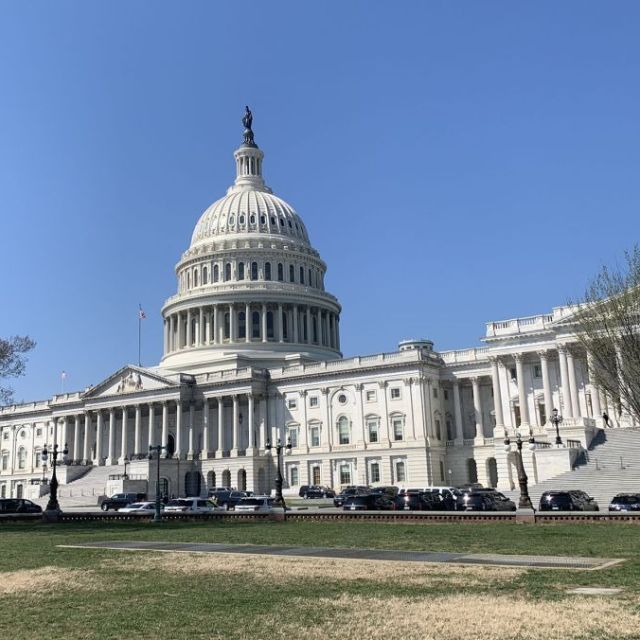This piece is part of our series, Policy Actions for Racial Equity (PARE), which explores the many ways housing policies contribute to racial disparities in our country.
In 1996, five Los Angeles mothers came together to fight what they saw as a major threat to the health and future of their children and community members: toxic air pollution.
While Los Angeles has had a long history of combatting excessive levels of toxic air pollutants, their neighborhood — the predominantly Latino Pacoima in the Northeast San Fernando Valley of Los Angeles County — is disproportionately impacted by poor air quality. These mothers formed Pacoima Beautiful, an environmental justice organization to bring the neighborhood together to combat the pollution, trash, and toxic smells through community clean-ups and tree planting events. The team of concerned mothers has since grown into an organization that has become a model for community-led action to address environmental and climate resilience needs.
This story of Pacoima Beautiful is just one example of a community developing its own solutions to environmental and climate-related challenges profiled in “What’s Possible: Investing NOW for Prosperous, Sustainable Neighborhoods,” a collection of essays published by Enterprise, LISC, and The Federal Reserve Bank of New York that provides practical solutions for an equitable path to building resilience, while also highlighting community-driven solutions for addressing climate and environmental risks.
Why Communities of Color are More Vulnerable to the Risks of Climate Change
The U.S. has a long history of discriminatory housing policies and practices that have left low-income communities and communities of color with disproportionate amounts of climate burdens. Studies have shown that neighborhoods that experienced redlining – when the Federal Housing Administration and other lending institutions designated neighborhoods with large populations of Black, Indigenous, and People of Color (BIPOC) as undesirable for mortgage lending – experience higher rates of climate risks.
These communities are disproportionately exposed to heat islands, which are urbanized areas that experience significantly higher temperatures than surrounding rural areas. They are also at greater risk for flooding, often due to their location in low-lying areas, large quantities of pavement and lack of trees, and outdated infrastructure systems. Additionally, they experience higher rates of chronic medical conditions, some of which can be exacerbated by climate risks, as particulate matter and higher ozone levels degrade the air quality in their urban location.
While these communities, which are most often communities of color, do face significant housing, economic, and climate challenges, their circumstances have also prompted many of them to develop skills and lean on community strength to build resilience.
Community Transformation with Pacoima Beautiful
Debra Gore-Mann, president and CEO of the Greenlining Institute, further details the story of Pacoima Beautiful in her “What’s Possible” chapter, Empowering Communities: Leveraging a Local Model to Advance Social and Climate Resilience. Residents in Pacoima, which has a long history of community-led organizing efforts and activism, experience several climate-related challenges that impact their ability to thrive, including some of the most severe heat in Los Angeles County; a location surrounded by pollution-heavy infrastructure, such as highways, a heavy rail line, garbage dumps, and a local airport; overcrowded housing conditions; lack of green spaces; and high rates of asthma.
The organization continues to use a grassroots approach to create a safe and clean environment for residents, build community resilience, and undo the impacts of past injustices. Gore-Mann details Pacoima Beautiful’s Green Together Collaborative (GTC), which is a public-private alliance working to develop green infrastructure in Pacoima and Sun Valley that was made possible by California’s 2016 Transformative Climate Communities (TCC) legislation.
Pacoima Beautiful is using the TCC program, which funds community-led development and infrastructure projects that respond to resident-identified needs in communities most impacted by pollution, to support the GTC. Before receiving their TCC funding, Pacoima Beautiful had laid the groundwork for community-controlled revitalization through years of extensive planning processes with residents. Community members already knew the necessary steps to improve their living conditions and simply needed external financing from TCC to realize their plans. Through GTC they plan to implement critical climate solutions, including creating mobility hubs, electrifying public transportation, planting and maintaining 2,000 trees, building retrofits, installing solar panels on single-family homes, and creating green jobs.
Impact Investing and Navajo Power
As the impact of climate change expands, climate advocates and policymakers must also think innovatively about how climate solutions will be funded. A “What’s Possible” chapter by Avivar Capital’s Co-founder and Managing Partner, Lisa Richter, and Director, Javier Hernandez, Investing for More Prosperous and Climate-Resilient Communities: How Investors Can Construct a Portfolio that Does Both, provides a blueprint for effective climate justice impact investing that works to fund solutions in historically climate-burdened communities. The essay outlines various methods and tools for building an effective climate justice investment portfolio, including federal policies, such as the Inflation Reduction Act (IRA); Community Development Financial Institutions (CDFIs); fixed-income bonds; climate-justice focused private debt funds; and public equities.
This chapter also shares the story of Navajo Power, a majority Native-owned renewables infrastructure developer that builds utility-scale clean energy projects on Tribal lands. Brett Isaac, who co-founded Navajo Power in 2017, created this organization in response to the challenges that were rampant in the Navajo Nation, including high rates of asthma in children due to decades of pollutants in the community, lack of jobs on the reservation, and limited water supply due to excessive use by a neighboring coal-powered power plant.
Isaac was able to begin the transition into clean energy for his community, while also uplifting his Tribe’s cultural values, ecosystems, sovereignty, and local economy, through the creation of Navajo Power. In addition to providing solar power to many Native households that have never had access to electricity, the organization is providing the Navajo community with 10% ownership of the company held in trusts, converting the coal power plant that previously polluted the Navajo community into a solar power plant, creating green construction and operation jobs on Tribal lands, and showing community members the power of their natural resources. The company’s work transforming communities across Indian Country is driven by Isaac’s desire to achieve energy independence on Tribal lands and also made possible by impact investors that co-develop their solar projects, which provides Navajo Power with funding to invest in future Tribal community-led climate resilience projects.
Replicating and Scaling Community-Driven Climate Solutions
As the climate crisis worsens, policymakers and investors must provide vulnerable communities with the support they have been missing, while also learning from their experiences. TCC is a prime example of a state program that provides disadvantaged communities with the funding and resources they need to scale resident-led climate resilience and mitigation plans. More states and localities can implement similar programs that remove the typical “top-down” approach to funding opportunities and enable communities to continue creating their own climate solutions, but with the resources needed for success.
To further enhance financing opportunities for communities to safeguard their residents from the risks of climate change, policymakers at the federal, state, and local levels should have more organized systems for sharing resources and information on the process of connecting with impact investors who are excited to partner on environmental justice projects. Government support connecting impact investors to community-led projects could also increase the number of low-income communities and communities of color that receive adequate funding to protect themselves from climate risks.
| Download or order a free copy of “What’s Possible” to read about other community-led opportunities for combatting climate change. |
Image

|
We encourage all who believe in the need to create a just society to read, discuss, and share the PARE blog series as we learn and act to address the impacts of housing policies on racial equity in America. We also invite you to join us in this conversation, by suggesting additional topics and sharing resources for how we can advocate for greater racial equity. If you’d like to offer feedback on our body of work, please reach out to the Public Policy team. You can also subscribe to our daily and bi-weekly policy newsletters for more information on Enterprise’s federal, state, and local policy advocacy and racial equity work.


